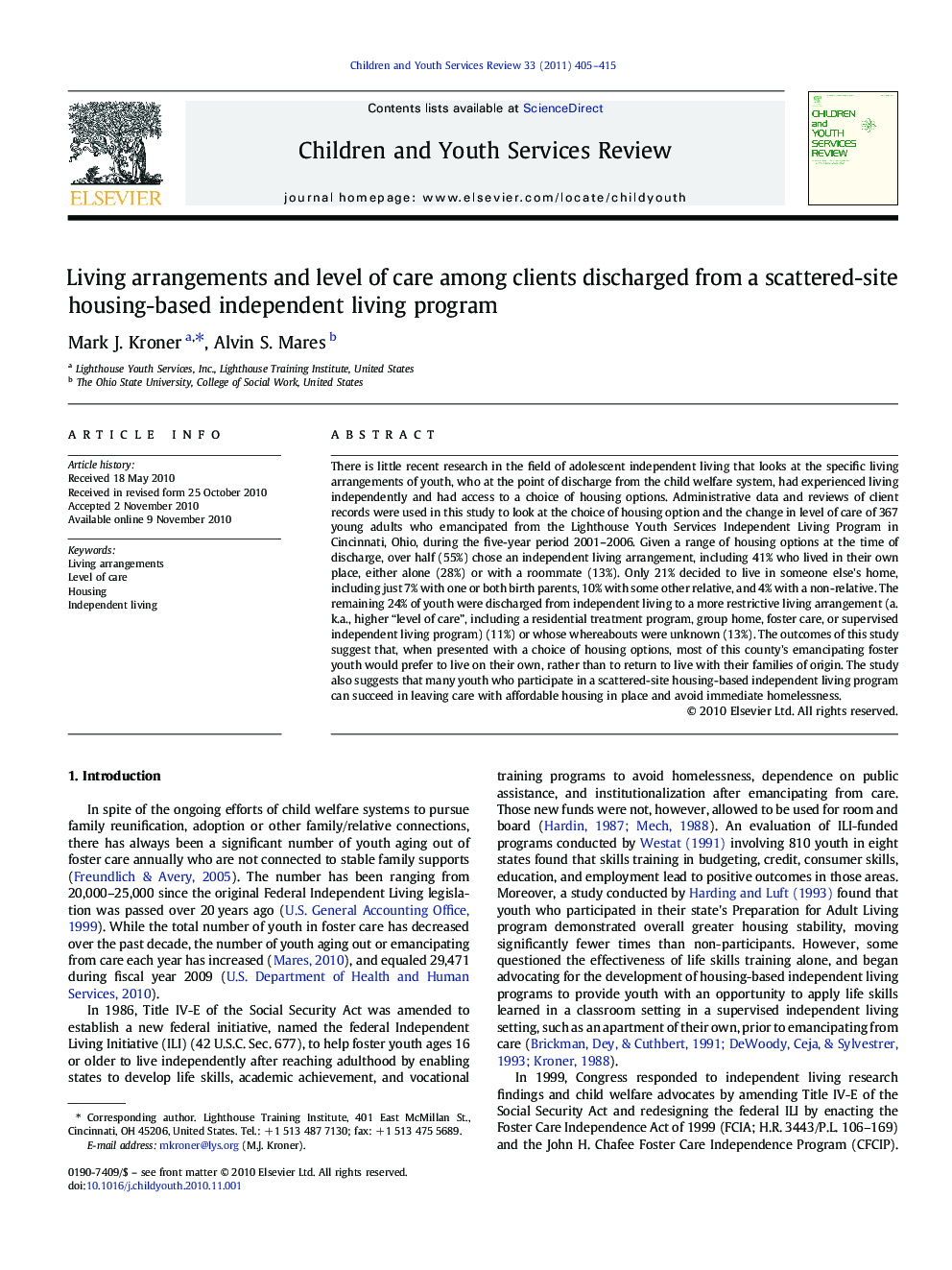| Article ID | Journal | Published Year | Pages | File Type |
|---|---|---|---|---|
| 347424 | Children and Youth Services Review | 2011 | 11 Pages |
There is little recent research in the field of adolescent independent living that looks at the specific living arrangements of youth, who at the point of discharge from the child welfare system, had experienced living independently and had access to a choice of housing options. Administrative data and reviews of client records were used in this study to look at the choice of housing option and the change in level of care of 367 young adults who emancipated from the Lighthouse Youth Services Independent Living Program in Cincinnati, Ohio, during the five-year period 2001–2006. Given a range of housing options at the time of discharge, over half (55%) chose an independent living arrangement, including 41% who lived in their own place, either alone (28%) or with a roommate (13%). Only 21% decided to live in someone else's home, including just 7% with one or both birth parents, 10% with some other relative, and 4% with a non-relative. The remaining 24% of youth were discharged from independent living to a more restrictive living arrangement (a.k.a., higher “level of care”, including a residential treatment program, group home, foster care, or supervised independent living program) (11%) or whose whereabouts were unknown (13%). The outcomes of this study suggest that, when presented with a choice of housing options, most of this county's emancipating foster youth would prefer to live on their own, rather than to return to live with their families of origin. The study also suggests that many youth who participate in a scattered-site housing-based independent living program can succeed in leaving care with affordable housing in place and avoid immediate homelessness.
Research Highlights► Study of 367 young adult clients of a large housing-based indepcndcnt living program. ► 22 specific living arrangements were identified and classified into 4 levels of care. ► Levels of care included: independent, with others, supervised/system, and unknown. ► 55% of clients attained independent living arrangement at discharge (niean age of 19). ► Longer-term (post-discharge) housing outcomes of such housing-based ILP’s are unknown.
